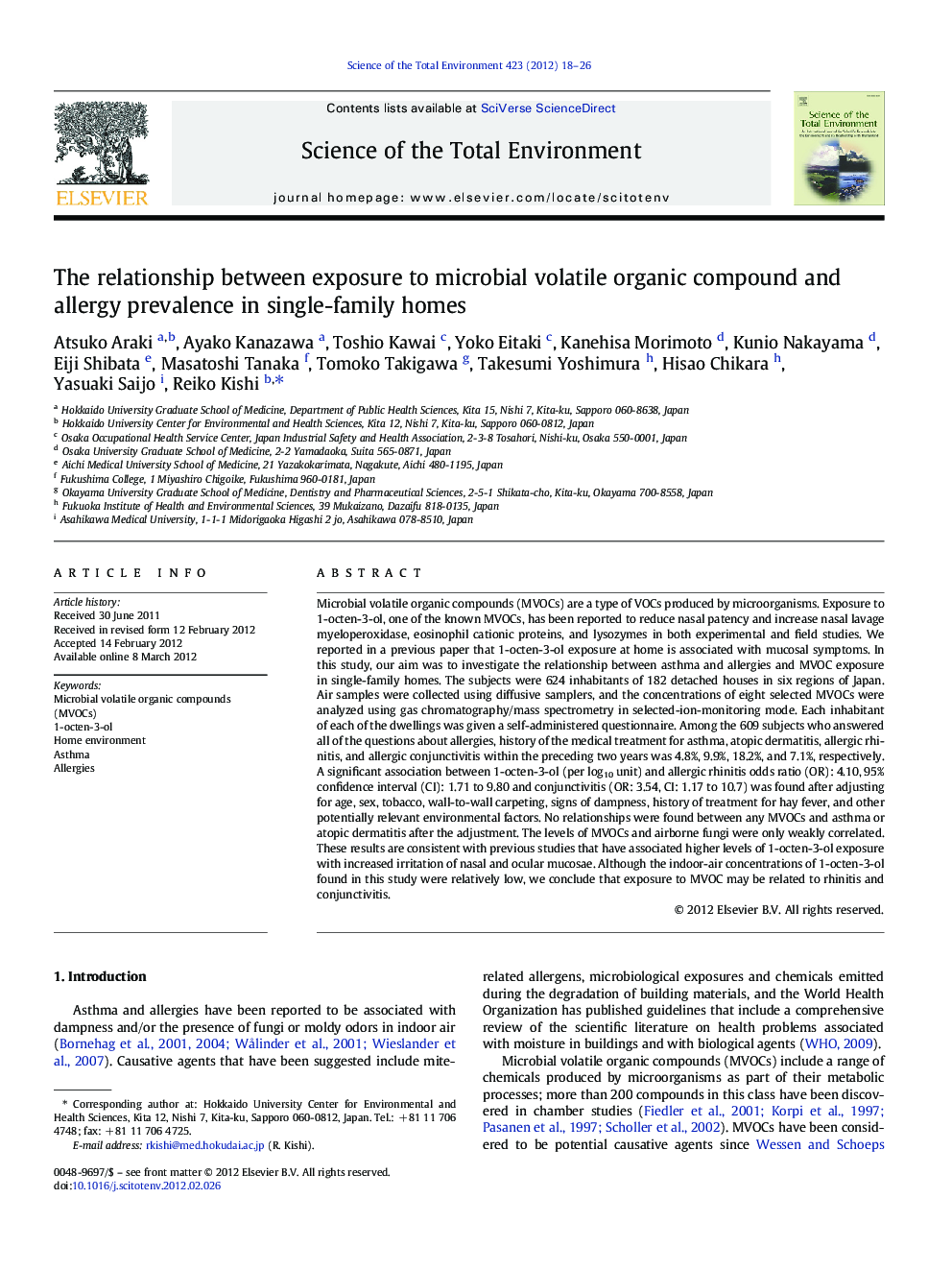| کد مقاله | کد نشریه | سال انتشار | مقاله انگلیسی | نسخه تمام متن |
|---|---|---|---|---|
| 4429549 | 1619828 | 2012 | 9 صفحه PDF | دانلود رایگان |

Microbial volatile organic compounds (MVOCs) are a type of VOCs produced by microorganisms. Exposure to 1-octen-3-ol, one of the known MVOCs, has been reported to reduce nasal patency and increase nasal lavage myeloperoxidase, eosinophil cationic proteins, and lysozymes in both experimental and field studies. We reported in a previous paper that 1-octen-3-ol exposure at home is associated with mucosal symptoms. In this study, our aim was to investigate the relationship between asthma and allergies and MVOC exposure in single-family homes. The subjects were 624 inhabitants of 182 detached houses in six regions of Japan. Air samples were collected using diffusive samplers, and the concentrations of eight selected MVOCs were analyzed using gas chromatography/mass spectrometry in selected-ion-monitoring mode. Each inhabitant of each of the dwellings was given a self-administered questionnaire. Among the 609 subjects who answered all of the questions about allergies, history of the medical treatment for asthma, atopic dermatitis, allergic rhinitis, and allergic conjunctivitis within the preceding two years was 4.8%, 9.9%, 18.2%, and 7.1%, respectively. A significant association between 1-octen-3-ol (per log10 unit) and allergic rhinitis odds ratio (OR): 4.10, 95% confidence interval (CI): 1.71 to 9.80 and conjunctivitis (OR: 3.54, CI: 1.17 to 10.7) was found after adjusting for age, sex, tobacco, wall-to-wall carpeting, signs of dampness, history of treatment for hay fever, and other potentially relevant environmental factors. No relationships were found between any MVOCs and asthma or atopic dermatitis after the adjustment. The levels of MVOCs and airborne fungi were only weakly correlated. These results are consistent with previous studies that have associated higher levels of 1-octen-3-ol exposure with increased irritation of nasal and ocular mucosae. Although the indoor-air concentrations of 1-octen-3-ol found in this study were relatively low, we conclude that exposure to MVOC may be related to rhinitis and conjunctivitis.
► Levels of microbial volatile organic compounds (MVOCs) were measured in single-family homes.
► Levels of 1-octen-3-ol were correlated with inhabitants' recent history of medical treatment for allergic rhinitis and allergic conjunctivitis.
► Levels of MVOCs were only weakly correlated with levels of indoor airborne fungi.
Journal: Science of The Total Environment - Volume 423, 15 April 2012, Pages 18–26